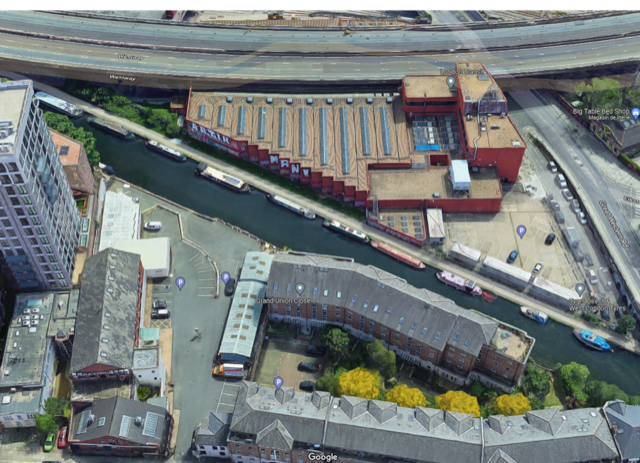Regional city centres should use their universities as a launchpad for regeneration, according to commercial real estate leaders, who say they can help drive innovation across communities.
During a debate on urban regeneration and city centre transformation hosted by Avison Young at the Mipim 2023 conference in Cannes, a panel of experts suggested that large cities across the UK were not making enough of their higher education institutions when planning major development projects.
Those on the panel used the example of Newcastle Helix, a landmark 24-acre hybridquarter in the North East city, to explain how city centre redevelopment could be concentrated around universities.
Pat Ritchie, chair of the Government Property Agency and former chief executive of Newcastle City Council, said: “I think the role of universities is fundamental in a lot of cities and that harnessing of university innovation as part of a long-term development. We wouldn’t have done Newcastle Helix, if it hadn’t been absolutely in partnership with the university.
“What makes [the scheme] work is having two national institutes, having the computing school, having the office development and lab development all in one system.”
Ritchie added: “Then you spread that out across the city and permeate that out to look at successful cities in the future. I also think playing to strengths is important.”
Newcastle Helix is a public-private sector partnership between the university, Newcastle City Council and Legal and General. According to its website, the university bought the 24-acre site in 2005 with the City Council and the-then regional development agency, One North East.
The scheme has become a hub for international tech and science businesses, with major tenants across its buildings, including the National Audit Office, which agreed a 10-year lease for the fourth floor at Legal & General's Spark building earlier this year in January.
Another building, the Catalyst, is home to the National Innovation Centre for Ageing and the National Innovation Centre for Data. The Frederick Douglass Centre is also a key part of the University of Newcastle's education provision.
Principal and UK president at Avison Young Nick Walkley agreed that regeneration efforts had to make more of universities and how they could help to shape community regeneration, like Helix.
He said: “Our North American colleagues find it utterly unbelievable that you would not anchor city centre regeneration around a major university being one of the leading actors.
“I studied in Liverpool, and even though the university is in the centre of the city, it could actually be three miles away given the interchange between the two places and that need to reconnect places and centres of activity being really strong.”
According to CoStar analysis, office take-up by regional universities in London has risen sharply in recent years at a time when overall demand has waned.
Non-London universities have taken 380,000 square feet of office space in the capital in the past three years, more than double the 152,000 square feet taken by higher education institutions in the previous three years. Overall London take-up fell by about a third over the same period.
- article9 Min ReadMarch 16, 2023 10:49 AMLocal leaders discuss investor appetite amid economic headwinds.
- article1 Min ReadMarch 16, 2023 07:06 AMCoStar News and sister publication Business Immo team up to quiz the leader of the region around Paris.
- article2 Min ReadMarch 16, 2023 06:20 AMParters commit to Joint Venture To Improve Birmingham's Knowledge Quarter
- article1 Min ReadMarch 16, 2023 05:49 AMThe IWG chief executive says commuting is 'one of the craziest inventions of the last 100 years' and on the ropes anywhere it is long, inefficient and expensive.
- article2 Min ReadMarch 16, 2023 05:10 AMMoney is not an issue for the US property owner and developer after Stone Point Capital became involved last month.
- article2 Min ReadMarch 15, 2023 06:10 PMGlobal markets were rattled by the big bank's troubles, prompting attendees at the Mipim property conference to ponder the impact on their industry.
- article1 Min ReadMarch 15, 2023 10:55 AMYoung is moving from London as group looks to double in size across the region.
- article1 Min ReadMarch 15, 2023 08:37 AMJames Porter moves from managing director - occupier solutions.
- article1 Min ReadMarch 15, 2023 07:07 AMCity centre site is destined for mix of housing units and sits close to railway station.
- article2 Min ReadMarch 15, 2023 06:48 AMExperts cite North East's Newcastle Helix scheme as an example of successful city centre regeneration around higher education.
- article1 Min ReadMarch 15, 2023 06:18 AMHorrell also talks to CoStar News about sector opportunities, getting deals done and how the Chancellor could help business growth.
- article5 Min ReadMarch 14, 2023 09:36 AMVacancies have stabilised at lower levels in London but yields are rising.
- article3 Min ReadMarch 14, 2023 09:21 AMCushman report warns that a combination of factors means landlords must act now.
- article2 Min ReadMarch 14, 2023 07:32 AMDeal includes 64% of stake in Icade Santé and Icade Healthcare Europe's portfolio of assets.
- article1 Min ReadMarch 14, 2023 05:41 AMThe commercial and residential agent is launching a dedicated BTR division at the real estate conference.
- article2 Min ReadMarch 14, 2023 05:02 AMThe duo has teamed up with transport group Ascendal to announce the plans at the Mipim conference.
- article13 Min ReadMarch 13, 2023 10:25 AMCristina Garcia-Peri, senior partner and head of strategy and corporate development at Azora, catches up with CoStar News.
- article1 Min ReadMarch 13, 2023 06:20 AMThe transaction for the Pullman Cannes Mandelieu Royal Casino has completed as the world's biggest real estate conference gets underway in the city.
- article2 Min ReadMarch 13, 2023 05:38 AMThe acquisition of a majority stake in Germany's Redos enables it to create a huge retail warehouse park portfolio.
- article4 Min ReadMarch 12, 2023 07:56 AMThe UK minister for investment, a US economics star and Amanda Staveley to be among speakers as 23,000 prepare to descend on Cannes for the world's largest real estate conference.

























